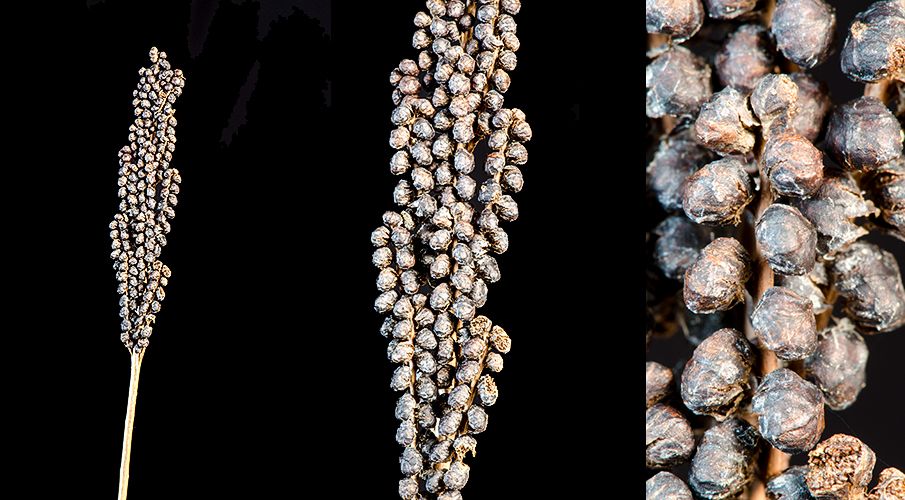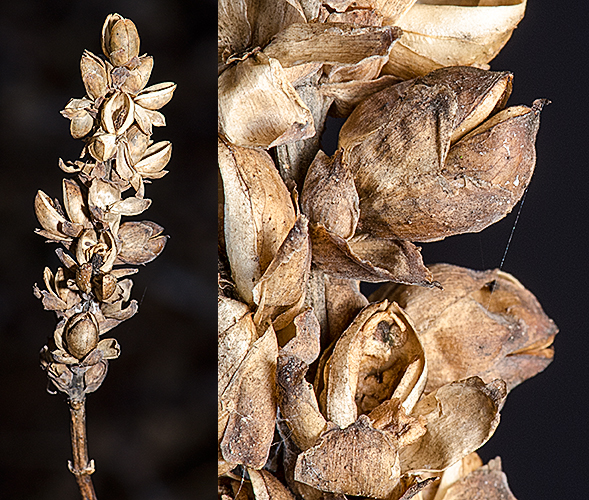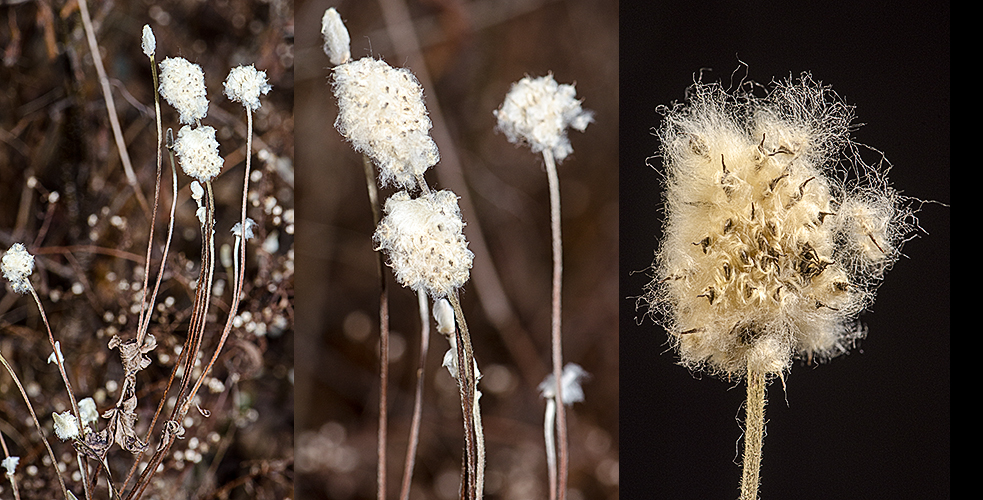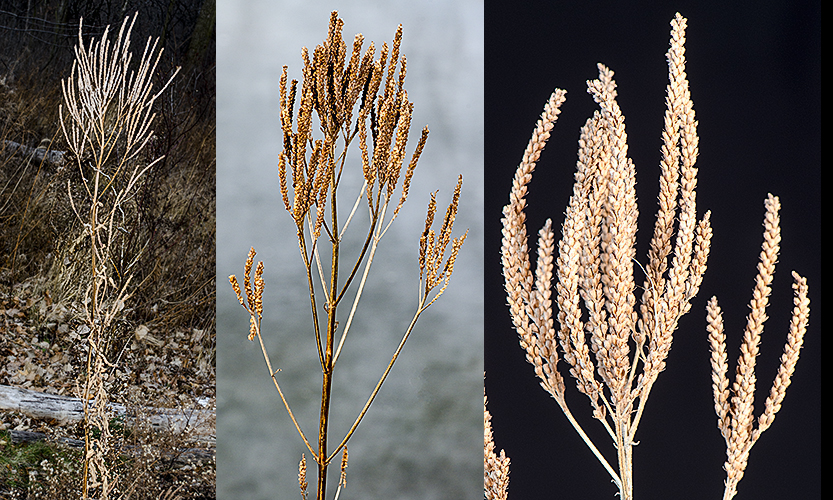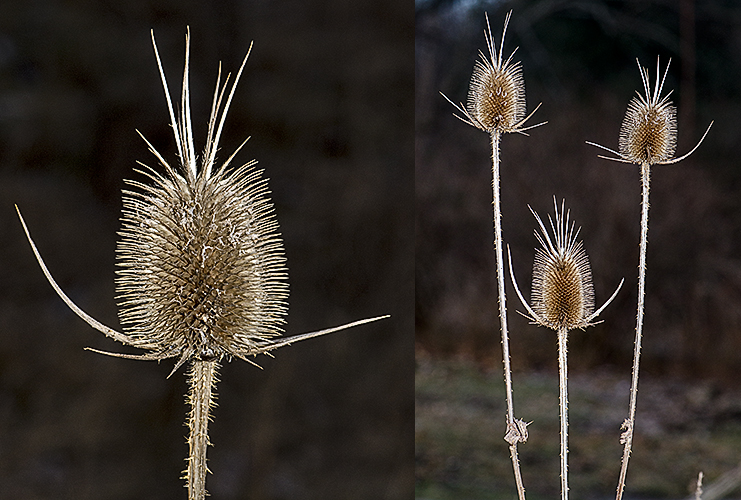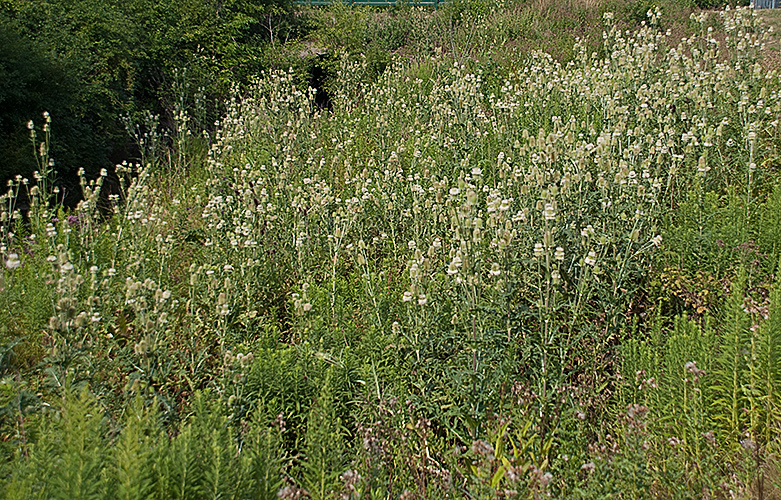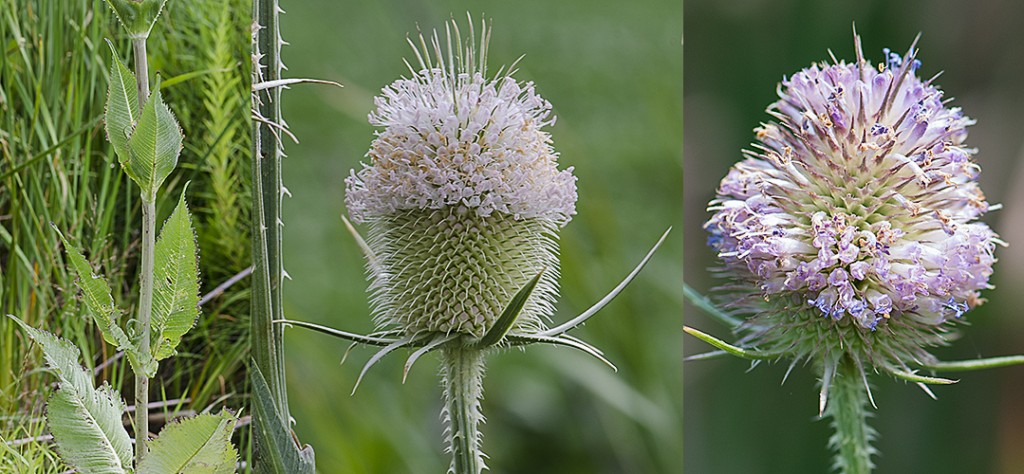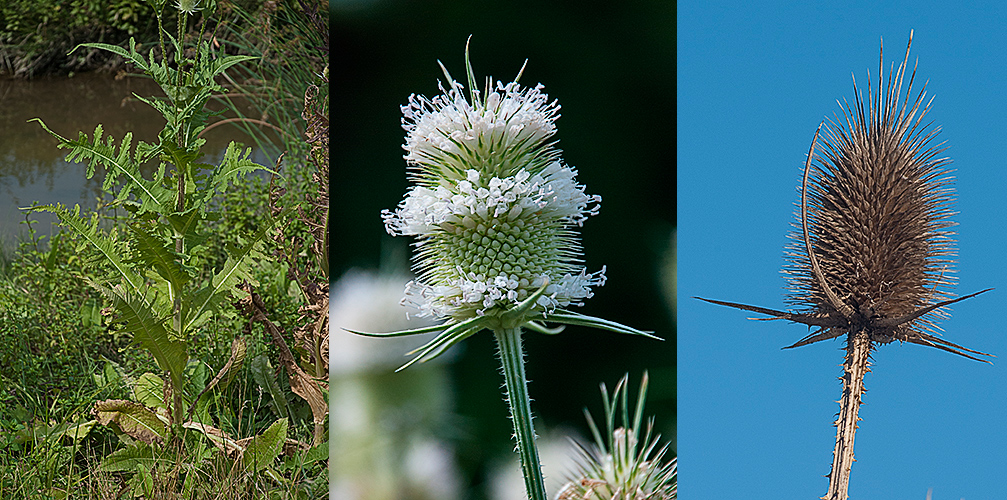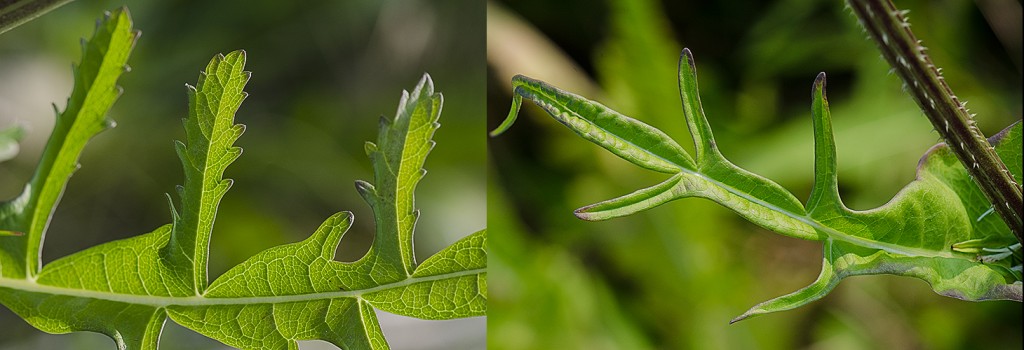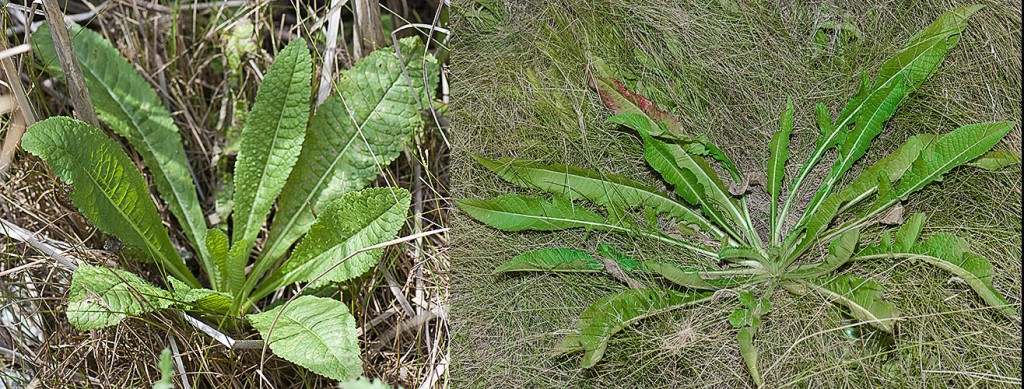Here are some of the Michigan winter wildflowers with elongated seedheads.
Sensitive Fern (Onoclea sensibilis) does not have seedpods but sporophylls. They form a beadlike structure in parallel rows that persist throughout the winter. The spores are released in springtime. It occurs throughout the state.
White Turtlehead (Chelone glabra) seedpods do resemble a turtle’s head. Opposite leaves, a dense spike with the seedpods in rows distinguish this species. It is 1-2 feet (.3-.6m) tall. It occurs throughout the state.
Thimbleweed has cottony seed heads at the end of the stems. There are two species in Michigan, one (Anemone cylindrica) with narrow seedheads and a second species (A. virginiana)with broader seedheads. It is often not possible to separate the two species in the winter. Both species occur throughout the state. A. virginiana is the species in the photographs.
Blue Vervain (Verbena hastata) has narrow terminal spikes, squarish stems, and opposite leaves. It is 2-4 (.6-1.2m) feet tall. It occurs throughout the state.
Yellow Giant Hyssop (Agastache nepetoides) has broader terminal clusters than Blue Vervain. It has squarish stems and opposite leaves. It occurs in Michigan south of the Bay City to Muskegon line. It is now appearing in plantings of native plants.
Teasel has a spiny stem and a head surrounded by curved brackets. It is 3-10 feet (1-3m) tall. There are two species in Michigan: Wild Teasel (Dipsacus fullonum), and Cut-leaf Teasel (Dipsacus laciniatus). See my August 2014 blog for more info. They often cannot be distinguished in the winter. Both species occur throughout the state but are more common south of the Bay City to Muskegon line.
Copyright 2015 by Donald Drife
Webpage Michigan Nature Guy
Follow MichiganNatureGuy on Facebook

